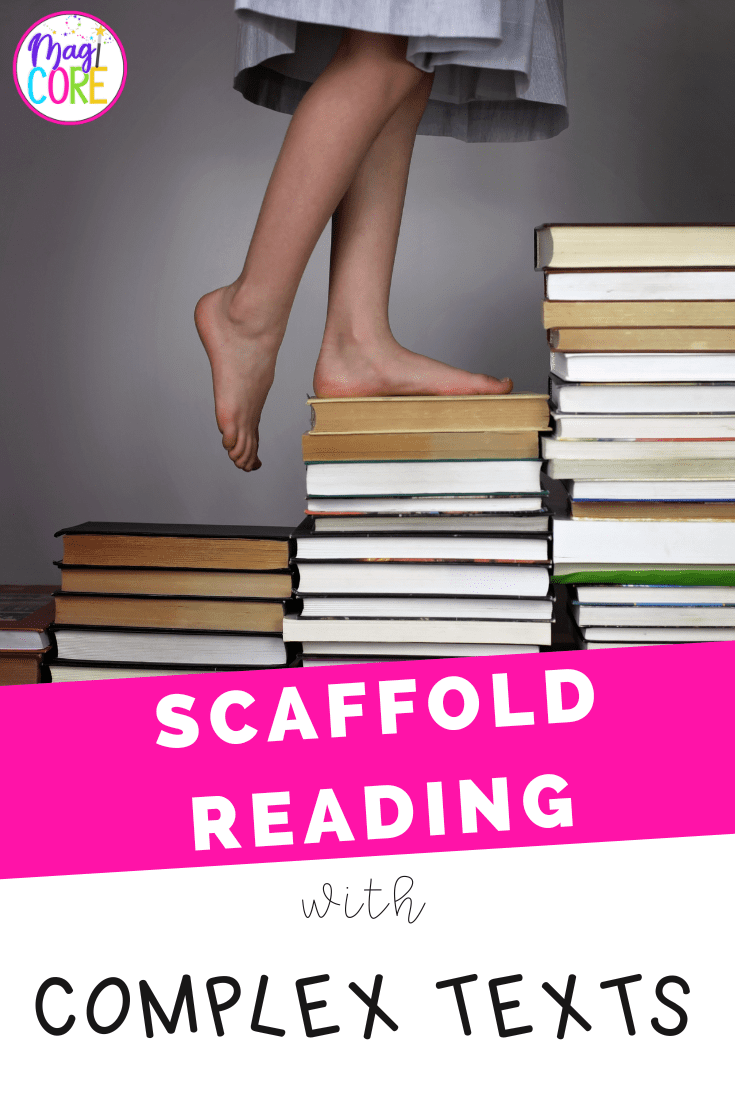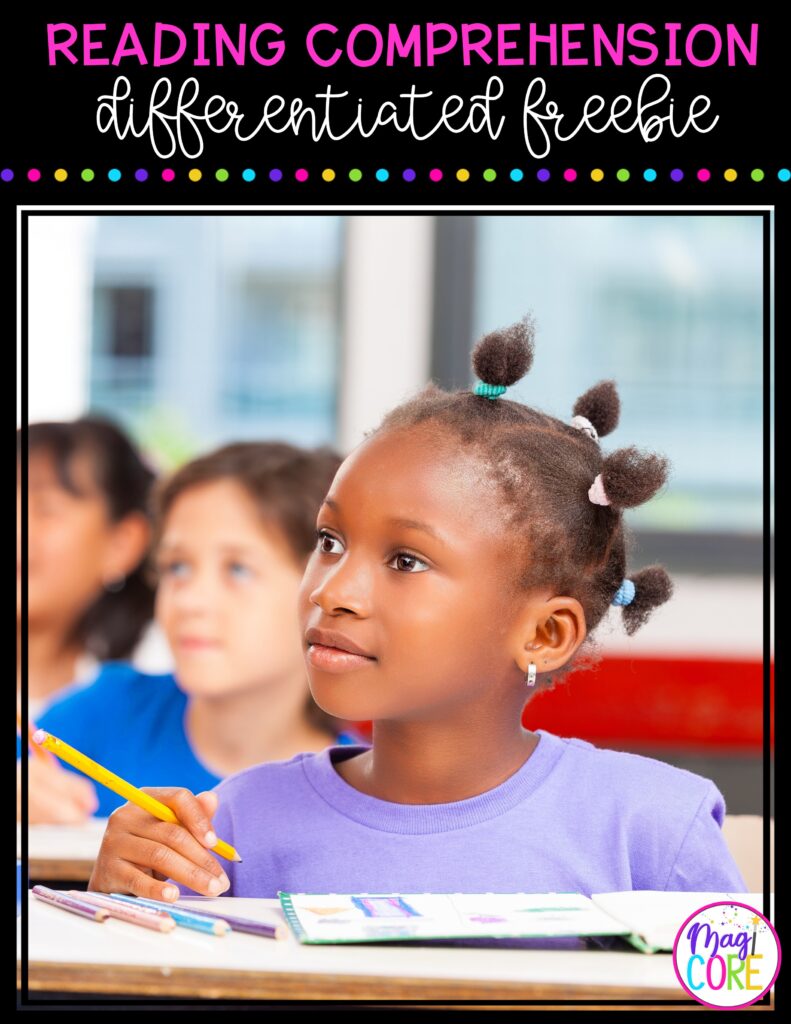The Science of Reading has become the latest hot topic in education. However, The Science of Reading is a broad term that refers to scientifically based research about teaching reading. While many know the Science of Reading has a large focus on phonics and decoding, many are unsure of what this looks like for upper elementary grades. So how do elementary teachers push forward with helping their students progress with reading comprehension, vocabulary, and linguistics? One very effective solution is to scaffold reading with complex texts that are on grade level.
In K-1, or while students are learning to decode, we know research supports a heavy focus on phonemic awareness, phonics, and decoding. During this time, teachers should focus independent and instructional student text to simpler texts. (With the exception of read-alouds, which build comprehension, vocabulary, and a love of reading for all ages.) Students who are learning to decode need repetition and exposure to spelling patterns and high-frequency words. However, after decoding is mastered, from second grade on, children should be exposed to more challenging, grade-level texts.
Teachers for a long time (71 years!) have believed that there is a magical instructional level students should be matched to in order for them to succeed with reading comprehension. The theory is that if students are matched to a “just right” text that is not too hard or too easy, they will be reading and learning at the optimal sweet spot. The fact of the matter is that this theory is not supported by any research.
I remember spending bucketloads of classroom time testing student reading levels to see where their “sweet spot” was for independent reading and guided reading groups. Unfortunately, when Emmett Betts developed this theory in the 1940s, he basically made up arbitrary accuracy and comprehension scores. Even so, this theory stuck for decades to come, impacting children as they are learning to read.
Recent research has shown that students learning from material that is on instructional level either do as well or less well than students learning from grade-level materials. This makes sense because if we limit kids to simplistic text with less complex vocabulary, linguistics, and test structures and features, they do not have the exposure they need to learn. They will be perpetually behind in all areas of reading, language, and vocabulary. Read more about literacy expert, Timothy Shanahan’s theory on limiting student book choice here.
Alyssa Morgan and Melanie Kuhn are two of the researchers who conducted studies on scaffolding reading with complex texts. Read the full study here: They found,
“In less effective high poverty classrooms, teachers tend to focus on phonics, sight word reading, and simple books, rather than on processing complex texts with a broad variety of ideas. We believe that the comprehension practice gained from focusing extensively on grade level texts in both of these programs provided the basis for the long-term benefits.”
Research shows that a wide variety of reading will have the biggest impact on student reading progress. Students should have access to many texts of various genres, below, at, and above their reading level to make the most progress.
Here is a helpful chart you can use that includes scaffolds for before, during, and after reading.
The article “The History of Teddy Bears” may typically be a text teachers would avoid with their struggling readers since it is in the high end of the 4th and 5th grade text complexity Lexile level band. This text is leveled on the Lexile scale 980L, while the 4th and 5th grade band spans 740L-1010L. Therefore, this text may be a challenge for 4th and 5th graders who are not reading on level. Let’s look at how we can scaffold this text for students.
Most students will be familiar with the topic of teddy bears, so it is not necessary to provide background knowledge for this topic. You could introduce who Theodore Roosevelt was, but it is not necessary for students to comprehend this text.
Before struggling readers encounter the text, I would work with them in a small group to highlight, read, and discuss the following words: governor, unsportsmanlike, defenseless, refused, and political cartoonist.
Struggling readers would read this text in pairs 1-2 times with a focus on fluency.
For instance, this article is already set up to focus on main idea and details.
This passage is fairly short, with only four paragraphs, so I would chunk this text into paragraphs. While reading for comprehension, students should underline or annotate the main idea of each paragraph. The questions also help break the text up since they move through the passage chronologically.
As students work independently on this passage, rotate to ensure you are available to help and check for student understanding through questioning.
During fluency reads, listen to students’ oral readings of sections. One sentence to focus on is the first sentence of the last paragraph.
Use as a support for fluency readings.
These year-long bundles include about 12 scaffolded grade-level passages per standard. Incorporating these into your reading instruction for the year will expose your students to a wide range of genres and topics with grade-level concepts, vocabulary, and linguistics. All passages have certified Lexile levels to ensure students are being exposed to texts that are the appropriate complexity.

We strive to create resources that empower teachers and transform student success. We create skill-focused resources that promote critical thinking, enhance student engagement, and incorporate diversity. Our goal is to develop the tools teachers need to reach their students and foster a lifetime of learning.

